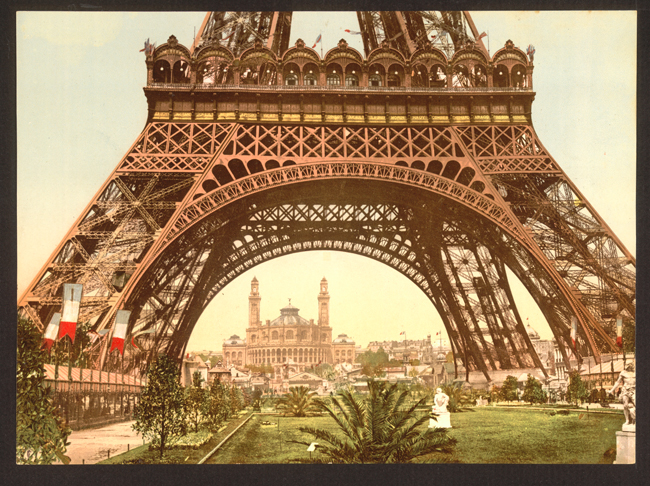212 Days – The Paris of 1900

View of Trocadero through the Eiffel Tower at the Paris Exposition of 1900. Image from the Library of Congress.
Discover the Paris of 1900.
Take a trip back in time to Paris when the city was filled with the sights and sounds of the Great Fair. It was a time when Art Nouveau was in fashion and the noise from the electric railcars competed with the galloping of horses.
The story of the Exposition Universelle of 1900 begins with President François Carnot’s decree but the country would see three more men serve as President of France before the opening ceremony. The Exposition lasted for 212 days during which time Metro line No. 1 was launched for service to the public.
From 1892 to 1900, the world witnessed the execution of, what even some French considered to be, the lofty ambitions of the Exposition’s commission and the product was unveiled on Easter Sunday in 1900. The population of Paris increased by about 7% during the Exposition, hosting about 240K visitors per day. To compare, in 2012, Disneyland® Paris hosted 44K visitors per day*.
The 50 million visitors to the Exposition included 83K exhibitors from 42 countries. The exhibitors were organized into 18 groups and 121 subgroups. Alfred Picard, the General Commissioner, not only considered the needs of the exhibitors but also the concessionaires, collaborators, workers, conference attendees, and the Olympians. In all, over 75 attractions were created that were surrounded by beautiful parks, fountains and gardens.
The Exposition was a combination of a public fair and a venue for an international tradeshow, many international conferences, the Olympic games and a centennial retrospective. Three main areas of Paris were used for the Exposition with a total open and enclosed space of 224 hectares, the equivalent to 418 American football fields.
Consider that some of the beautiful buildings that dot the landscape of Paris today were built for the Exposition. In fact, over 25% of the Exposition’s budget can be traced to three structures that still stand today. The Eiffel Tower is not one of them. It was built for the 1889 exposition and received new paint as well as some structural and electrical upgrades. The city’s infrastructure was improved to include new rail, sewer and water lines.
Read the book to discover the Paris of 1900 through the maps, images, facts and figures translated and summarized from many original documents including Alfred Picard’s Exposition universelle internationale de 1900 à Paris and his Bilan d’un siècle. Also view videos from the Thomas Edison collection as sourced from the Library of Congress.
*Source: corporate.disneylandparis.com/about-our-company/the-narrative-of-numbers/index.xhtml
